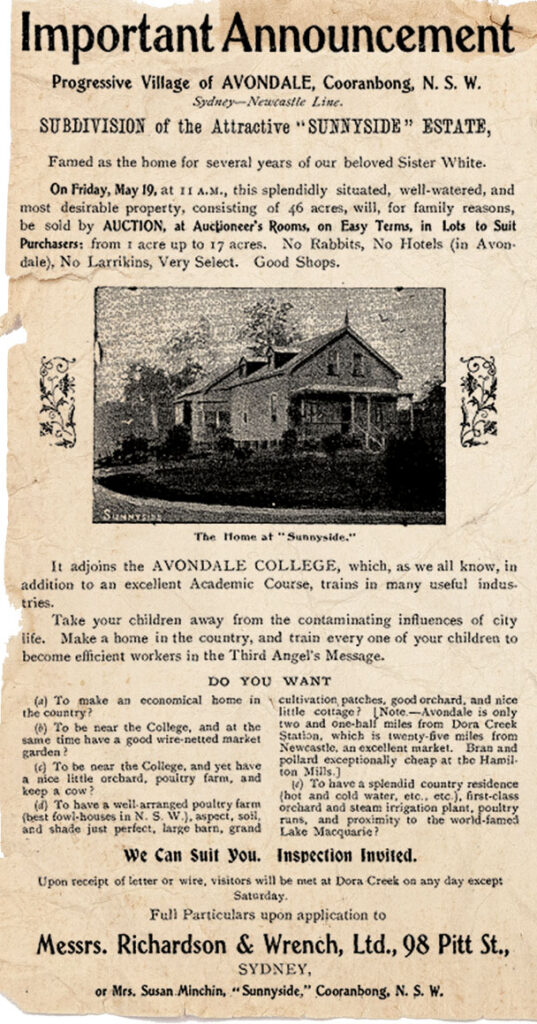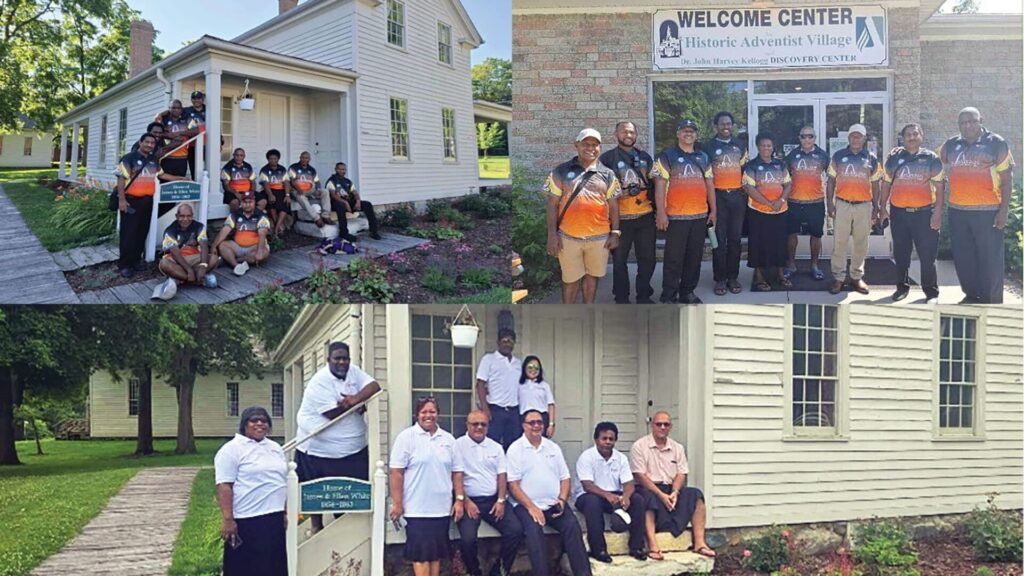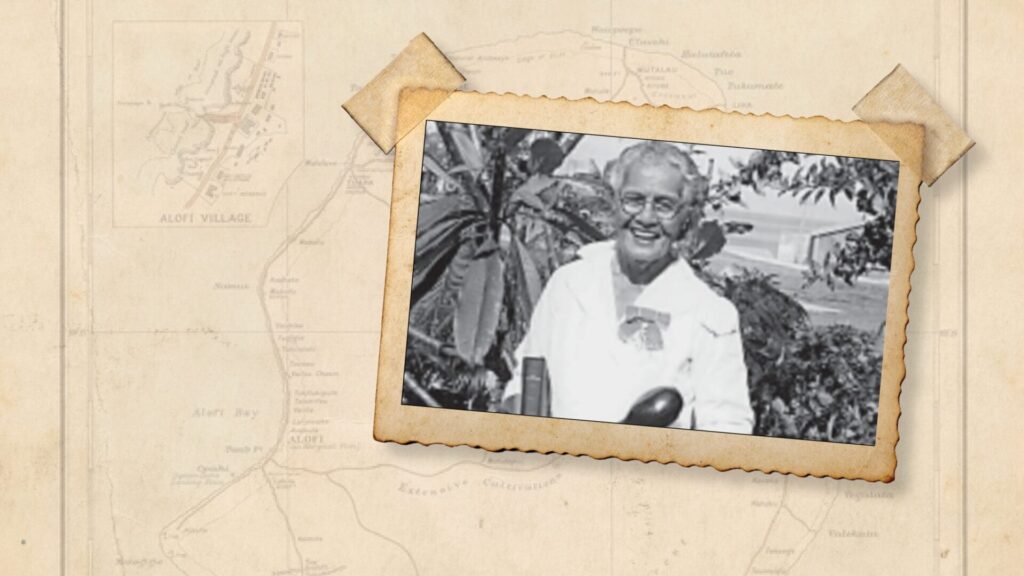Ellen White’s beloved Australian home, which she named “Sunnyside”, was located beside the Avondale College Estate in Cooranbong, NSW. After her departure from Australia in 1900 (detailed in the previous issue of Adventist Record), the land was sold to the family of a young Adventist man who had begun study at Avondale College. In 1905, the Sunnyside Estate was put up for sale again, as advertised in the Union Conference Record on March 15, 1905. You can check out this interesting announcement below.

Around this time, the Sydney Sanitarium was opened (January 1, 1903) in Wahroonga, NSW. In the years following its opening there appeared to be an ongoing staffing shortage after the initial chief physicians and medical directors, Drs Daniel and Lauretta Kress, departed for the US in 1907. The Union Conference Record in September 1907 reports, “The Sanitarium, medical, and health food interests came up for much careful thought and consideration. The Wahroonga Sanitarium has passed through quite an experience during the past months. Almost immediately on the arrival of the Doctors Richards from England, the Doctors Kress were called to leave on short notice for America; and shortly after that Brother and Sister McDonald, the former of whom had charge of the gentlemen’s bathrooms, and the latter of the ladies’, had to leave the institution because of the illness of Brother McDonald. This greatly crippled our work, and brought heavy burdens on the Doctors Richards, who had so recently come to take the most responsible position in the institution, as well as on others. These conditions have greatly crippled our work in other ways also. In view of the responsible position of the Sanitarium, and the important educational work there carried on, the brethren at the council all felt that the work there should be supplied with the best help available, and nothing less than this could do justice to the work required by the institution. While the Doctors Richards are doing their utmost to carry this work, and others do what they can to stand by them, the load and responsibility is too heavy, and this was fully appreciated by the brethren.” A staffing solution was found and communicated to the newly chosen employee through the Union Conference Record.
In March 1910 (vol 14 no 13), a report was featured on the front page detailing the Rev Hugh Jones’ (a Presbyterian minister in Victoria) experience at the Sydney Sanitarium, titled “A Month at the Sydney Sanitarium”:
“While on a visit to Sydney over three years ago as a delegate to our Federal Assembly, I stayed with a Presbyterian family that had a relative undergoing treatment at the Sydney Sanitarium. These friends were so much pleased with their dear one’s treatment that they urged me to visit the sanitarium as one of the ‘sights’ of Sydney. I went; I saw; I was conquered. So warmly was I drawn to Dr Kress, and so full of admiration at the beautiful surroundings, that I resolved to spend a holiday there as soon as it could be managed. At the end of last winter I suffered from a poisoned leg; the run-down condition consequent on this led to the carrying out of my resolve. I spent four weeks at the sanitarium, beginning from the first week of last September. My highest expectations were realised, and in some respects surpassed. The food was above the criticism of the most fastidious, though I soon found that here as elsewhere one has to make as wise a choice as possible. To do this, we were helped by lectures from the doctors, and hints from the attendants and menu-cards. By experience I found what best agreed with me, and so derived most benefit during the latter part of my stay.
The ‘treatment’ in the bath-rooms I found to be not only beneficial, but exceedingly pleasant. The massage was most skilfully done by young men that always looked bright, and apparently never lost their temper. Any extra service asked for was rendered with invariable cheerfulness. My experience of the bath-room is one of the brightest memories I retain of my visit.
The nurses, male and female, formed part of the benignant atmosphere of the place. They looked pleasant; their manners were pleasant; their service was pleasant. Such nurses are forthcoming only when their hearts are warmed by divine love to God and man.
To Dr Richards I felt myself closely drawn. The doctor is singularly approachable; the most nervous, shrinking patient can speak freely to him. He is particularly free from professional mannerism.
The morning worship at 7 am I attended with scarcely a break, and received much comfort and strength from it. The service was generally conducted by Pastor Gates, and two of his prayers in particular gave me such an uplift as I shall not soon forget. I had the privilege of many conversations with Pastor Gates. He is a sincere, self-denying, enthusiastic missionary of the cross, and has given proof of his quality by years of arduous labours in foreign mission fields. In his broken health he bears branded on his body ‘the marks of the Lord Jesus.’
I paid a flying visit to Avondale, where there is a great industrial settlement of Seventh-day Adventist students. Avondale is between the Hawkesbury and Newcastle. There I saw the process of preparation of some of the famous Sanitarium Health Foods, notably granose flakes. How different the place looked to an abattoir! The printing presses and bookbinding rooms were interesting in such an out-of-the-way place. At dinner I had a good look at the students—a fine, healthy set of young people. Occasionally they get a black sheep among them, but either his colour is changed or he is turned into outside pastures. Avondale College is giving technical education that I am sure the government technical institutions cannot surpass, and withal imparting to its students a moral and spiritual training the government institutions cannot even attempt to do.
I was privileged to visit the homes of several of the Wahroonga Seventh-day Adventists, and received in them much unaffected hospitality. All showed me much kindness. I was thus enabled to see how the principles of food reform are being carried out by the Seventh-day Adventists in their own homes.
The surroundings of the Sydney Sanitarium are exceedingly beautiful. There are some lovely walks in the vicinity, along tree-embowered roads or through sylvan glades. I know, as I must have averaged about five miles a day walking, and I never grew tired of the scenery. While I was at the sanitarium the waratah was in gorgeous bloom, and there were lovely wildflowers everywhere carpeting the ground, the exquisite native rose being particularly striking. The large estate of the sanitarium is really a sanctuary for native birds, a large variety of which may be found in the season by anyone who will keep his eyes and ears open. Being an enthusiastic bird-lover, I spent some delightful times among these sylvan haunts watching the birds. I saw birds there, such as the active little tree-creeper, that I have never seen about city gardens.
Such an institution as the Sydney Sanitarium can rest and be worked only on a religious basis, and by men and women who are themselves genuinely religious. The devotion of the sanitarium staff could not be bought with money. The doctors, nurses, electrical engineer, and manager could all command much larger salaries ‘outside’. They feel, however, a ‘call’ to this work, and having all they actually need, but no wealth, they are content and happy.
Though I am by no means a Seventh-day Adventist, I am in the most complete accord with their methods at the sanitarium. Strongly seized of the fact that the gospel of Christ is for men’s bodies as well as for their souls, they are putting their faith into practical operation, with splendid results. Their methods appealed to me as rational and scientific. They are not faddists—unless aversion to a flesh diet, tea, alcohol, and other drugs constitutes them such. And in their treatment of the sick they manifest much of their Master’s sympathy and compassion. Their ordinary methods are not those of ‘faith healing’, although they believe in and habitually practise prayer for blessing on physicians, nurses, and patients. The atmosphere of the sanitarium is one of prayer and works—man working together with God. Nevertheless, prayer only, apart from physical means, is occasionally used by some of the pastors when they feel led to it, and used not in vain.
I have no hesitation at all in recommending ‘outsiders’, such as I am, to undergo treatment at the sanitarium, if Dr Richards advises them to do so. They will be charmed with the place and the people. A lady visitor, whom I have known from my boyhood, and whose lot it has been to travel much, was telling me one day about some of her experiences, not very pleasant, in first-class hotels. Then she suddenly said with emotion, ‘What a beautiful place this would be to end one’s days in among these happy, kindly people!’ That expresses much—‘a beautiful place’, ‘happy, kindly people’. No wonder I felt physical and spiritual benefit from my holiday at the Sydney Sanitarium!”






